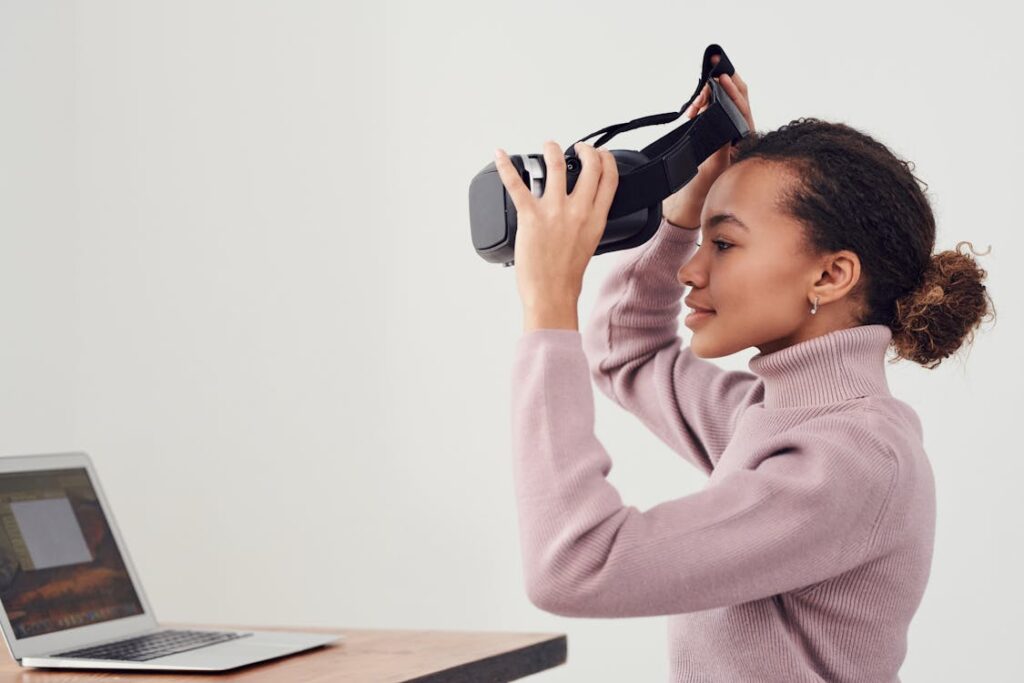Losing a limb is not just a physical challenge—it is an emotional one, too. Many amputees struggle with feelings of grief, anxiety, and even depression as they adjust to their new reality. The journey to acceptance can be difficult, and traditional therapy does not always address the deep emotional wounds that come with limb loss.
But technology is changing that. Virtual Reality (VR) therapy is emerging as a powerful tool to help amputees heal, not just physically but emotionally. By creating immersive, interactive experiences, VR therapy helps individuals process their trauma, reduce pain, and regain confidence. It is more than just a game—it is a lifeline for many who are looking for ways to feel whole again.
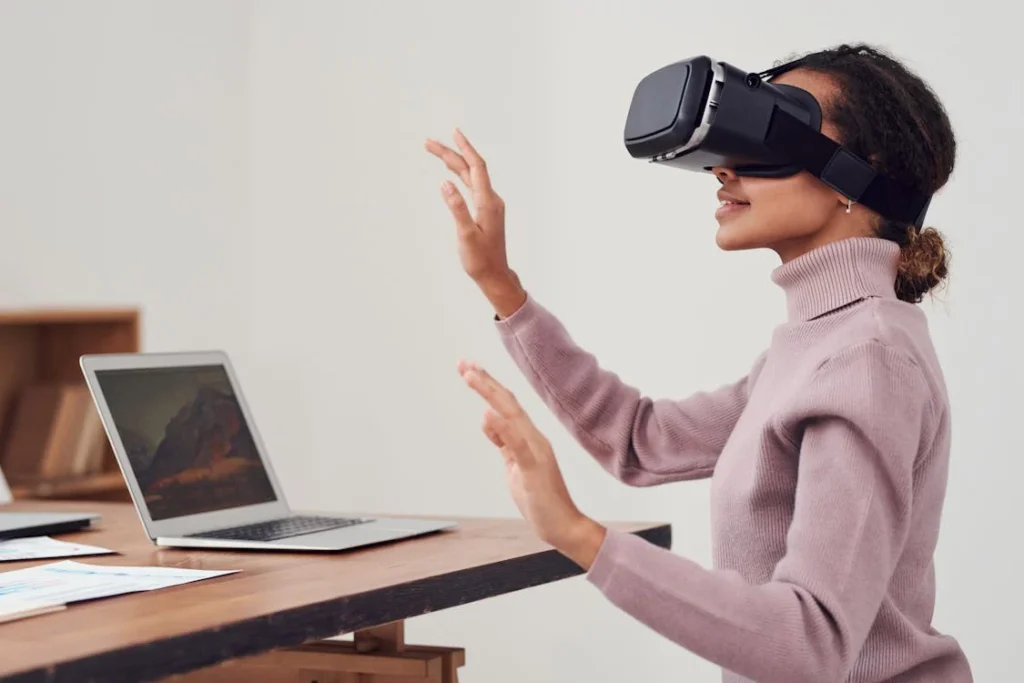
Understanding the Emotional Impact of Limb Loss
Losing a limb is a life-changing event that affects more than just mobility. It brings a wave of emotions that can be difficult to manage. Many amputees experience grief, similar to losing a loved one.
There is a sense of loss, not just of the limb itself, but of independence, confidence, and identity. The way a person sees themselves changes overnight, and this can be overwhelming.
Beyond grief, anxiety is another major emotional hurdle. The fear of being unable to perform daily tasks, of being seen differently by society, or of not being able to return to work can weigh heavily on the mind.
Social interactions may feel intimidating, and simple activities, like going to a store or meeting friends, can become stressful.
Depression is also common among amputees. The adjustment period is long, and without the right support, feelings of hopelessness can take over.
Some individuals struggle with body image issues, while others feel disconnected from themselves, as if the person they were before the amputation no longer exists.
These emotional challenges are just as real as the physical ones and need to be addressed with the same level of care.
Why Traditional Therapy is Not Always Enough
Traditional therapy plays an important role in helping amputees cope with emotional trauma. Talking to a therapist can provide a safe space to express fears, frustrations, and sadness.
Counseling can help individuals reframe their thoughts and find ways to move forward. However, traditional methods often rely on verbal communication, and for many amputees, talking about their struggles is not enough.
Some emotions are difficult to put into words. The experience of losing a limb is deeply personal, and while therapists can offer guidance, they may not always be able to truly understand what it feels like.
In many cases, trauma is stored in the body as well as the mind, meaning that traditional talk therapy alone may not address the full scope of an amputee’s emotional pain.
This is where Virtual Reality therapy comes in. Instead of just talking about fears and anxieties, VR therapy allows amputees to experience healing in a way that feels real. It taps into the power of immersion, engaging the mind and body in a way that traditional methods cannot.
How Virtual Reality Creates a Safe Space for Healing
Virtual Reality therapy works by placing individuals in a controlled, interactive environment where they can face their fears, build confidence, and retrain their brain. It offers a safe space to experience situations that might otherwise be too intimidating in real life.
For example, an amputee who feels anxious about walking in public can practice navigating a virtual street, complete with people, traffic, and everyday obstacles.
Because the brain processes virtual experiences in a way similar to real-life experiences, this type of exposure can help reduce fear and build confidence.
VR can also help with body image issues. Some programs allow amputees to see themselves with a virtual limb, helping them reconnect with their body. This can be incredibly empowering, making it easier to accept and embrace the changes that have occurred.
Beyond emotional healing, VR therapy has been found to reduce phantom limb pain, a condition where amputees feel pain in the missing limb.
By engaging the brain in virtual movement exercises, the nerves responsible for the pain can be retrained, providing relief that traditional pain management methods often fail to achieve.
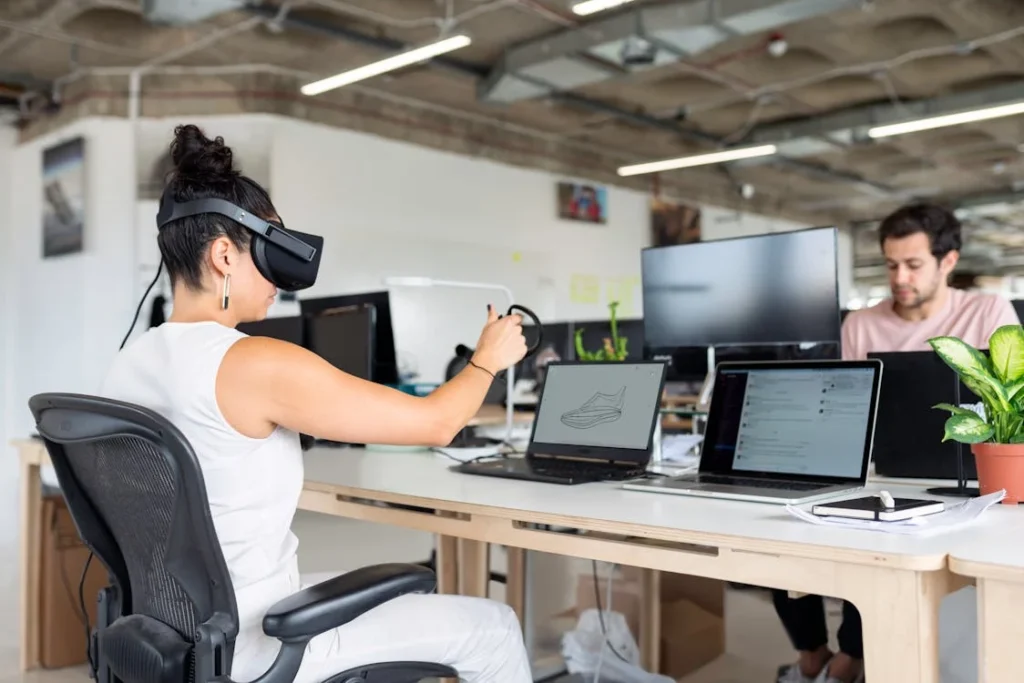
The Science Behind Virtual Reality Therapy for Amputees
Virtual Reality therapy is not just a new-age concept—it is backed by science. The brain is an incredibly adaptable organ, and VR taps into this adaptability, also known as neuroplasticity.
When a person wears a VR headset, their brain processes the virtual world as if it were real. This ability to “trick” the brain into believing what it sees is what makes VR therapy so powerful for amputees.
One of the most well-documented applications of VR therapy is in treating phantom limb pain (PLP). This is a condition where amputees feel pain, itching, or other sensations in a limb that no longer exists.
Scientists believe PLP occurs because the brain still holds a “map” of the missing limb, and when the nerves that once controlled it no longer receive signals, they misfire, causing pain.
VR therapy helps by creating an illusion of the missing limb. In many VR programs, an amputee can see a virtual version of their missing limb and control its movement.
This visual feedback helps the brain reorganize its neural pathways, reducing misfiring signals and, in turn, decreasing phantom limb pain. Many amputees who have struggled with PLP for years have reported significant relief after just a few sessions of VR therapy.
Beyond pain relief, VR therapy also helps with emotional trauma and anxiety. Studies have shown that exposure therapy—where individuals are gradually introduced to situations that cause anxiety—can be highly effective in reducing fear.
VR allows amputees to be placed in real-world scenarios, such as walking through a crowded mall or shaking hands with someone, without actually being in those situations.
Over time, this exposure helps reduce fear and increase confidence, making real-life interactions feel less overwhelming.
Another scientific principle behind VR therapy is mirror therapy, which has been used for years to treat amputees and stroke patients.
Traditionally, mirror therapy involves placing a mirror next to the intact limb so that it reflects an image of the missing one. This tricks the brain into seeing a complete body, which helps with pain relief and emotional acceptance.
VR takes this concept to the next level by creating a fully immersive experience where the missing limb appears to be back in place and fully functional.
The Role of Gamification in Emotional Healing
One of the reasons VR therapy is so effective is that it is not just a passive experience—it is interactive. Many VR programs for amputees use gamification, where therapy is turned into a game-like experience.
This makes rehabilitation feel less like a chore and more like an engaging challenge.
For example, an amputee might be placed in a VR environment where they must pick up objects, complete simple tasks, or navigate through a virtual world.
These exercises help the brain rewire itself, improving motor control, reducing anxiety, and even strengthening the emotional connection to their prosthetic limb.
Gamification also adds a sense of achievement. Many amputees struggle with feelings of helplessness after limb loss.
Completing tasks in a VR environment provides a sense of progress, showing them that they are capable of learning, adapting, and overcoming challenges. This boost in self-confidence carries over into the real world, making daily tasks feel more manageable.
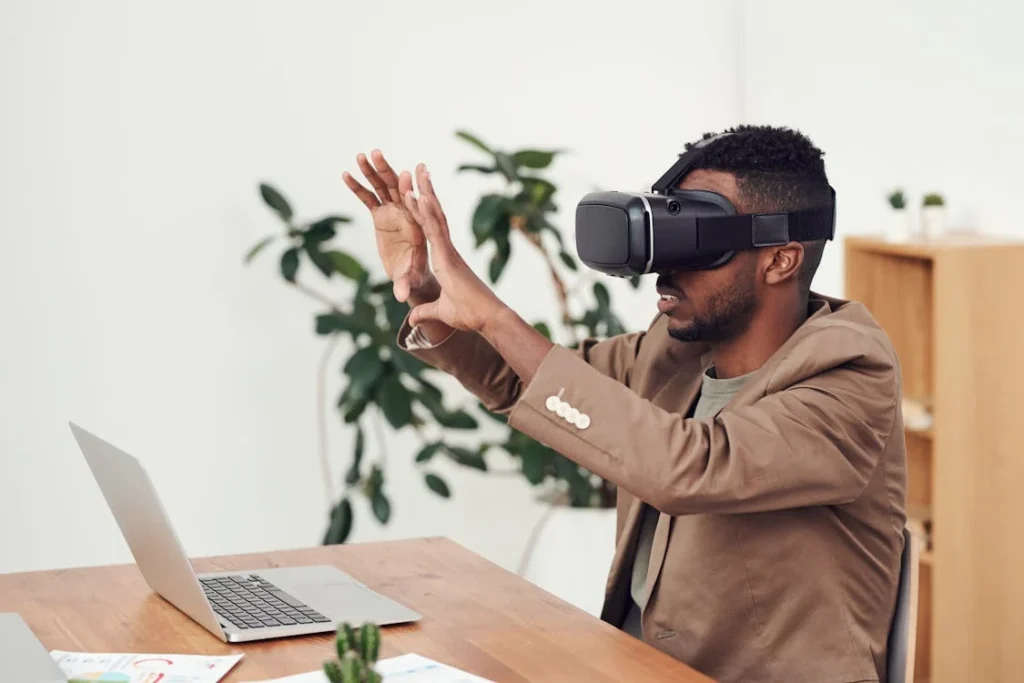
Real-Life Impact: How VR Therapy is Changing Lives
Virtual Reality therapy is not just a theory—it is already transforming lives. Around the world, amputees are experiencing real emotional and physical relief through VR-based rehabilitation programs.
From military veterans to accident survivors, individuals who once struggled with anxiety, depression, and phantom limb pain are finding new hope through this technology.
One powerful example is the story of a war veteran who lost his leg in combat. For years, he suffered from severe phantom limb pain and post-traumatic stress disorder (PTSD).
Traditional pain medications and therapy provided little relief. When he tried VR therapy, everything changed. By using a virtual environment where he could “see” and “move” his missing limb, his brain gradually stopped sending pain signals.
Over time, his PLP reduced significantly, and his PTSD symptoms also improved as he used VR exposure therapy to work through his trauma.
Another inspiring case is a woman who lost her arm in a car accident. The emotional toll of her amputation was heavy—she avoided social situations, struggled with self-image, and experienced severe anxiety.
With VR therapy, she was able to practice interacting in social settings within a safe, controlled environment. She could shake hands with virtual people, perform everyday tasks, and even see herself with a functional virtual limb.
This process helped her rebuild her confidence and made it easier for her to reintegrate into daily life.
These real-world examples show that VR therapy is not just about distraction—it is about active healing. It gives amputees the tools to regain control, both physically and emotionally, by reshaping the way they see themselves and the world around them.
How VR Therapy Complements Prosthetic Use
Beyond emotional healing, VR therapy plays a crucial role in helping amputees adapt to prosthetic limbs. Learning to use a prosthetic can be challenging, and many new users experience frustration when trying to control their artificial limb.
VR bridges this gap by allowing amputees to train with a virtual version of their prosthetic before using the real one.
For example, an amputee learning to use a bionic hand like Grippy™ from Robobionics can first practice grasping objects in a virtual environment. This helps them understand the mechanics of their prosthetic in a stress-free setting.
Because VR therapy strengthens the brain’s connection to the missing limb, it also improves how quickly a person adapts to their real prosthetic, making movements feel more natural.
Additionally, VR-based gamified rehabilitation programs help amputees improve motor skills, coordination, and reaction times, all of which are essential for effectively using a prosthetic.
At Robobionics, we integrate gamified training into our rehabilitation approach, ensuring that our users feel comfortable and confident with their prosthetic limbs.
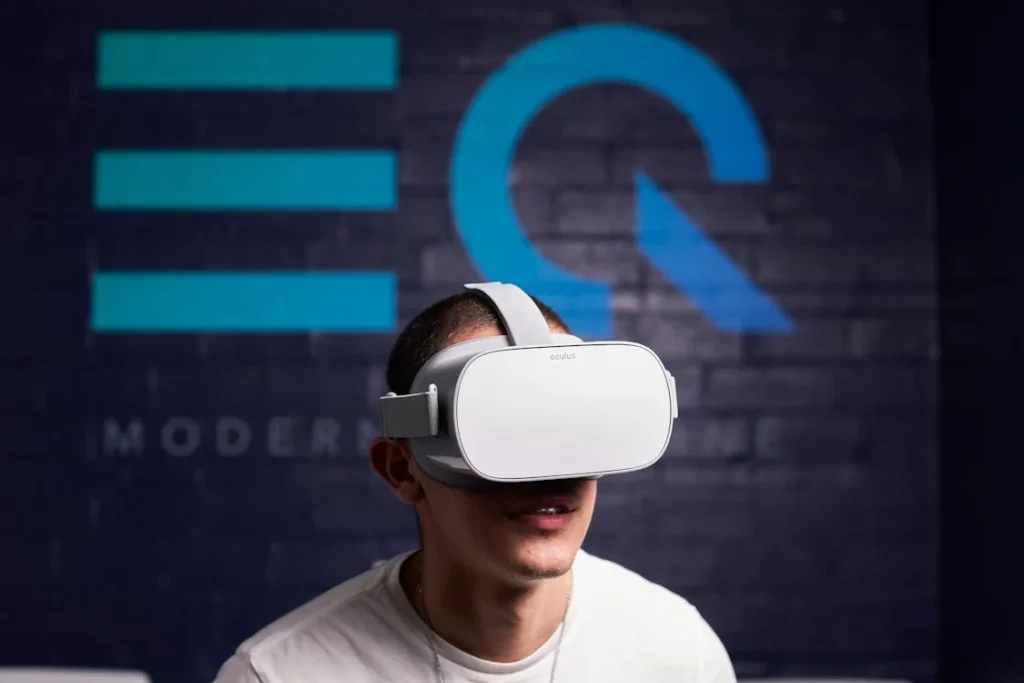
The Future of Virtual Reality Therapy for Amputees
Virtual Reality therapy is still evolving, but its potential is limitless. As technology advances, VR systems are becoming more immersive, personalized, and accessible.
In the near future, we can expect even greater improvements in how VR helps amputees heal emotionally and physically.
One of the most exciting developments is the integration of artificial intelligence (AI) with VR therapy. AI can create adaptive VR experiences that change based on an individual’s emotional and physical responses.
For example, if an amputee struggles with certain movements in a VR environment, the system can automatically adjust the difficulty level, ensuring they receive the right level of challenge and support.
AI-driven therapy can also track emotional responses, identifying moments of stress or discomfort and adjusting the experience accordingly to prevent overwhelming the user.
Another promising advancement is haptic feedback technology, which enhances the sense of touch in VR environments.
Current VR therapy primarily relies on visual and auditory cues, but with haptic gloves and suits, amputees will be able to feel textures, pressure, and resistance within the virtual world.
This can make rehabilitation even more effective by creating a stronger connection between the brain and the prosthetic limb.
Making VR Therapy More Accessible
Despite its benefits, one of the biggest challenges of VR therapy is accessibility. High-quality VR systems can be expensive, and not all rehabilitation centers have the resources to offer them.
However, companies and organizations are working to make VR therapy more widely available. Affordable VR headsets and mobile VR applications are being developed to allow amputees to access therapy from the comfort of their own homes.
At Robobionics, we recognize the importance of accessible rehabilitation solutions. That is why we are committed to integrating gamified, home-based rehabilitation programs with our prosthetic solutions.
By combining prosthetic training with engaging VR experiences, we ensure that users receive the support they need, no matter where they are.
The Emotional and Psychological Breakthroughs Ahead
As VR therapy becomes more advanced, it is also expected to play a larger role in mental health treatment for amputees. Many amputees struggle with PTSD, depression, and anxiety, and VR therapy is proving to be a valuable tool in addressing these issues.
Future developments will likely include VR environments specifically designed for emotional healing, where amputees can engage in relaxation techniques, mindfulness exercises, and guided mental health therapy.
Furthermore, social VR platforms could provide amputees with a sense of community. Imagine a virtual world where amputees from different parts of the world can connect, share experiences, and support one another.
This type of peer support can be incredibly powerful in reducing feelings of isolation and helping individuals adjust to their new reality.

Overcoming Psychological Barriers with VR Therapy
One of the biggest challenges for amputees is overcoming psychological barriers that can slow down recovery and limit independence.
These barriers often come in the form of fear, self-doubt, and negative thought patterns that make it difficult to adjust to life after amputation. Virtual Reality therapy is proving to be a powerful tool in breaking these mental barriers and helping amputees regain control over their lives.
Rebuilding Confidence Through Virtual Exposure
Fear of social situations is common among amputees, especially in the early stages of recovery. Many worry about how others will perceive them, how they will manage daily tasks, or whether they will ever feel “normal” again.
This fear can lead to avoidance behaviors, where individuals isolate themselves rather than facing uncomfortable situations.
VR therapy provides a safe space to confront these fears. In a controlled virtual environment, amputees can practice daily activities, such as walking through a busy shopping mall, ordering food at a restaurant, or simply being in a social setting.
Because VR therapy mimics real-life experiences, it allows users to build confidence without the pressure of actual social interactions.
Over time, this practice translates into real-world improvements, making it easier for amputees to engage with society without overwhelming anxiety.
Addressing Trauma and Emotional Processing
Beyond rebuilding confidence, VR therapy is also helping amputees process trauma and grief in ways that traditional therapy often cannot.
Losing a limb, especially due to an accident or sudden event, can be a deeply traumatic experience. The mind may replay the moment of injury, causing distress and even symptoms of PTSD.
VR therapy is being used in trauma recovery by helping amputees mentally reframe their experiences. Some VR programs allow individuals to revisit their trauma in a controlled way, helping them process their emotions without feeling overwhelmed.
Others focus on visualizing progress, where users can see themselves adapting, moving freely, and thriving with their prosthetic. This mental shift plays a huge role in emotional healing, allowing amputees to see themselves as capable rather than limited.
Strengthening the Mind-Body Connection
Another major psychological barrier that many amputees face is feeling disconnected from their body. The loss of a limb can create a sense of detachment, as if the body no longer feels complete. This disconnection can make it harder to accept and use a prosthetic limb effectively.
VR therapy helps by restoring the mind-body connection. When an amputee sees a virtual limb that moves in response to their thoughts, it strengthens the brain’s ability to accept a prosthetic as part of their body.
This is especially helpful for individuals who struggle to control their prosthetics, as it provides a form of mental training that makes movements feel more intuitive.
Breaking Through the Mental Limits
Many amputees develop self-imposed limits, believing they can no longer do certain activities or achieve the same level of independence they once had. VR therapy helps shatter these limits by allowing individuals to experience what is possible.
Whether it is learning to drive again, playing a sport, or simply walking confidently in public, VR creates a risk-free environment where amputees can test their abilities and push past mental roadblocks.
At Robobionics, we believe that rehabilitation is not just about physical recovery—it is about rebuilding the whole person. That is why we support innovative approaches like VR therapy that address both the mental and physical aspects of healing.
When combined with high-quality prosthetic solutions like Grippy™, this technology has the power to transform lives, restoring independence, confidence, and emotional well-being.
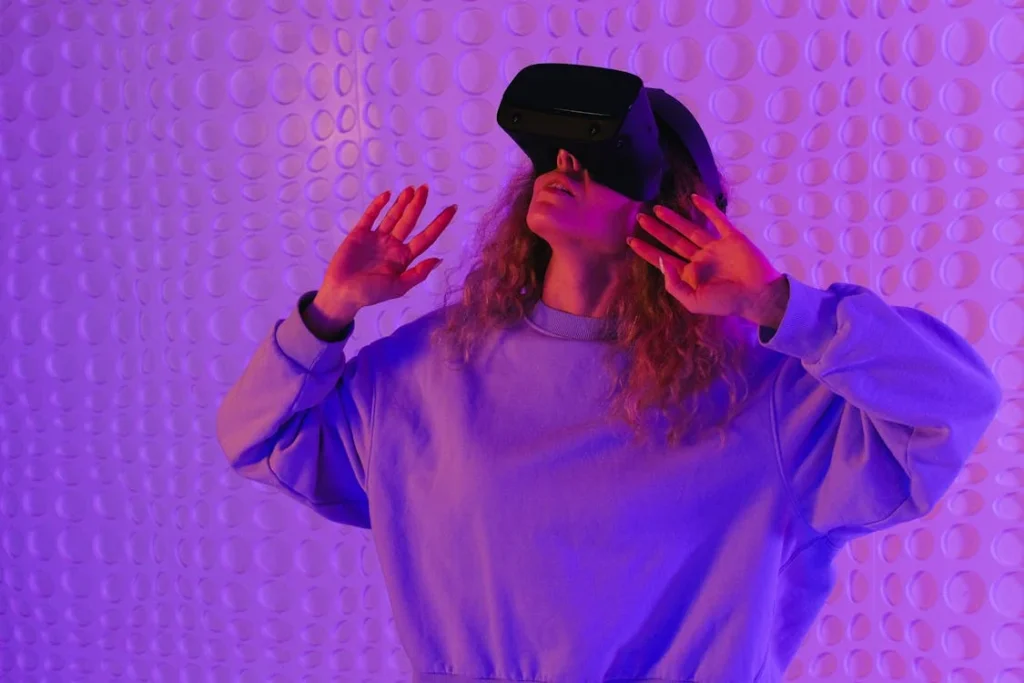
Virtual Reality as a Tool for Family and Caregiver Support
Healing from limb loss is not just an individual journey—it is a shared experience that affects family members, caregivers, and loved ones. Often, those closest to an amputee struggle to understand the physical and emotional challenges that come with amputation.
They want to help but may not know how. This is where Virtual Reality therapy is stepping in, not just for amputees but also for the people who support them.
Helping Families Understand the Amputee Experience
One of the biggest difficulties for family members and caregivers is truly understanding what their loved one is going through. They may hear about phantom limb pain, emotional distress, or struggles with prosthetic adaptation, but without firsthand experience, it is hard to relate.
Some VR programs are now designed to simulate what it feels like to be an amputee, helping caregivers gain deeper empathy and insight into the daily challenges their loved one faces.
For example, a caregiver can wear a VR headset and enter a simulated environment where they experience limited mobility or the frustration of trying to complete a task without a limb.
They may attempt to pick up objects, navigate a busy street, or even use a prosthetic in a virtual world. This firsthand experience fosters empathy and allows caregivers to provide more meaningful support.
Strengthening Emotional Bonds Through Shared VR Experiences
Beyond understanding, Virtual Reality therapy is also helping amputees and their families reconnect emotionally.
Many amputees experience a sense of isolation, feeling as though no one truly understands their struggles. This can create emotional distance between them and their loved ones.
VR therapy is changing this by creating shared virtual experiences where amputees and their families can engage in activities together.
Imagine a father who lost his leg being able to play virtual soccer with his child or a couple going on a virtual hiking trip together, despite mobility limitations.
These experiences help break down emotional barriers and remind amputees that they are still able to connect with the people they love.
Training Caregivers for Better Support
Caring for an amputee, especially in the early stages, comes with its own set of challenges. From helping with daily activities to supporting rehabilitation, caregivers often find themselves in a role they were not prepared for.
VR-based training programs are now being used to educate caregivers on best practices for assisting amputees, including how to help with prosthetic adjustments, provide emotional encouragement, and recognize signs of anxiety or depression.
For example, a caregiver can enter a VR scenario where they assist a virtual amputee in walking up stairs or adjusting their prosthetic limb.
These interactive experiences make training more effective than reading manuals or watching videos, as they provide real-time problem-solving practice.
Encouraging Open Communication
One of the most significant benefits of VR therapy in family support is that it encourages open communication. Many amputees struggle to express their emotions, fearing that they will burden their loved ones.
On the other hand, family members may feel unsure of how to talk about the changes without upsetting the amputee.
Shared VR therapy sessions create a non-threatening space where both sides can express their concerns, ask questions, and work through emotional challenges together.
At Robobionics, we recognize that an amputee’s journey does not happen in isolation. Support from loved ones is crucial, and VR therapy is providing new ways to strengthen those relationships.
By making the rehabilitation process more inclusive and engaging, Virtual Reality is helping amputees heal not just within themselves but also within their families.
Conclusion
Virtual Reality therapy is more than just a technological breakthrough—it is a revolution in emotional healing for amputees. By offering immersive experiences that reduce phantom limb pain, rebuild confidence, and strengthen the mind-body connection, VR is transforming the way amputees recover. It is not just about adapting to life after limb loss but about truly thriving.
Beyond individual healing, VR therapy is also bridging the gap between amputees and their families, helping caregivers provide better support and fostering deeper emotional connections. With continued advancements in AI, haptic feedback, and accessibility, the future of VR therapy promises even greater breakthroughs.
At Robobionics, we believe in harnessing the power of innovation to empower amputees. Alongside our cutting-edge prosthetic solutions like Grippy™, VR therapy is opening new doors for rehabilitation, making recovery more engaging and effective. If you or a loved one is navigating life after amputation, explore how technology can help. Book a consultation today and take the next step toward emotional and physical healing.



